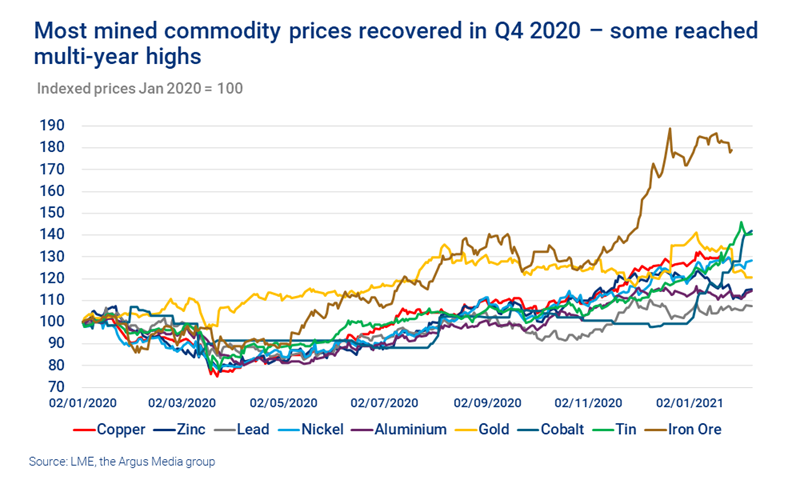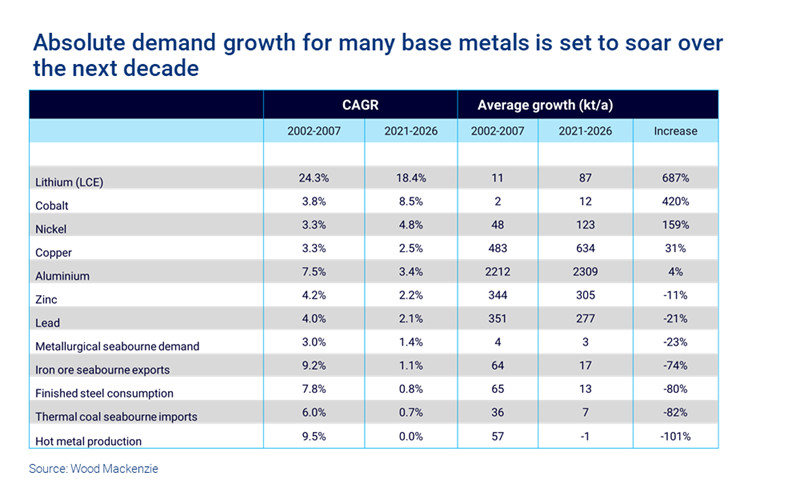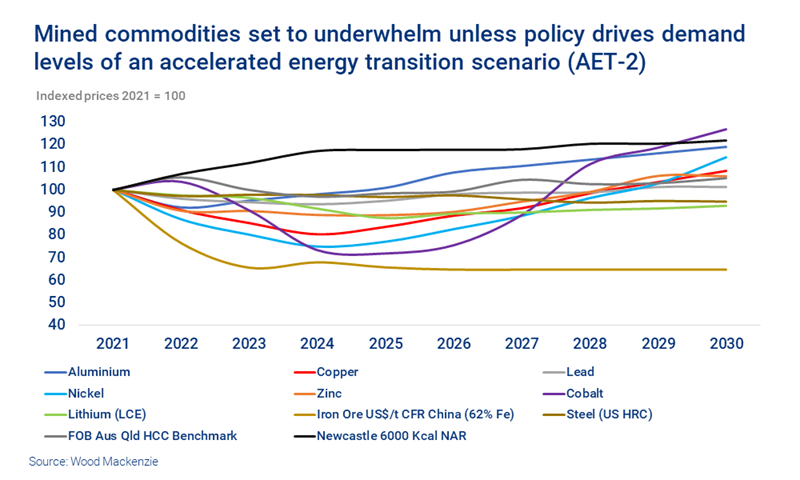Get this complimentary article series in your inbox
1 minute read
Julian Kettle
Senior Vice President, Vice Chair Metals and Mining

Julian Kettle
Senior Vice President, Vice Chair Metals and Mining
Latest articles by Julian
-
Opinion
Metals investment: the darkest hour is just before the dawn
-
Opinion
Ebook | How can the Super Region enable the energy transition?
-
The Edge
Can battery innovation accelerate the energy transition?
-
Featured
Have miners missed the boat to invest and get ahead of the energy transition?
-
Featured
Why the energy transition will be powered by metals
-
Featured
Could Big Energy and miners join forces to deliver a faster transition?
As the first wave of the coronavirus pandemic began to bite, many observers confidently predicted that the end was nigh for global economic activity. Governments around the world closed their economies as the only tool available to limit the unfettered spread of the virus. And so it came to pass that in April 2020 demand for mined commodities slowed to a virtual standstill and prices slumped.
But is a new super-cycle – or even a super-charged super-cycle – now ahead?
An upward climb, with some bumps in the road
Since the Covid-19 outbreak took hold, governments have undertaken unprecedented action to mitigate the enforced economic hiatus. Unparalleled fiscal stimulus programmes have been implemented, in many instances tied to metals-intensive green investment. The ensuing rise from the ashes has been phoenix-like, with economic recovery as swift as the decline. It came as no surprise that China, having been first ‘in' to the pandemic, has led the charge out of it, with other economies duly following.
This recovery has not been all plain sailing, of course. Global economic growth in Q4 2020 and early Q1 2021 has been muted, and with second and third waves rolling out across the globe, renewed shutdowns will have obvious consequences for growth and demand. Countering this is the assumed growth fillip and positivity around the delivery and roll out of the various vaccines.
Having reached marked lows during Q1 2020, most mined commodity prices recovered to well above pre-pandemic levels during Q4 2020. Some have even been boosted to multi-year highs: in the case of iron ore, for example, China’s steel-intensive stimulus programme has combined with supply constraints (primarily in Brazil) to drive prices up to levels not seen in a decade.
The case for a new super-cycle
Speculation now abounds that the China-led demand recovery is the start of a new energy transition-led super-cycle. The expectation is that unprecedented stimuli and synchronous global growth will sustain demand levels until the transition takes off. This has led many to assume that a lack of investment exacerbated by the pandemic will leave supply unable to keep up with rampant demand.
Under this scenario stocks of mined commodities will fall to critical levels, sustaining prices at a significant premium to incentive prices and resulting in supernormal profits being achieved. This could in theory sow the seeds for an overexuberant supply response as stakeholders chase the market. Our view is that this narrative regarding the start of a new super-cycle needs to be challenged, as there is a risk that the markets have got ahead of themselves.
What is a super-cycle?
Firstly, what exactly is a super-cycle? There have been many definitions, but we define a super-cycle as a permanent significant increase in commodity demand and price, with the latter driven by an inability of supply to keep up with demand and exacerbated by speculative activity.
The last super-cycle is widely considered to have started after the 2001 recession and lasted until 2015, when prices collapsed for most mined commodities. The BRIC economies, led by China, were the primary drivers of high demand growth rates and sharply rising prices for some commodities. The effect was particularly strong in the 2002-2007 and 2010-2014 periods, with the 2008-2009 global financial crisis causing only a temporary pause in proceedings.
A step change in demand for some (but not all) metals
The question being asked now is are we on the cusp of the next super-cycle, and about to see another permanent step change in demand?
Looking at our own base metal demand projections we would argue that these markets stand very much on the cusp, particularly the metals crucial to the energy transition.
Annual average growth rates over the next decade may be significantly lower on average than the last decade, but the compounding effect means that average annual growth in absolute terms is set to rise dramatically for copper, nickel and zinc. Meanwhile, for the true energy metals, including lithium and cobalt, even with our relatively conservative base case view on electric vehicle (EV) build and adoption and a relatively slow energy transition, incremental demand will rise substantially.
That’s the demand outlook for the long term. The key issue now is whether prices have got a little ahead of themselves, given that for many markets supply will be plentiful for the next few years.
Certainly, higher prices are welcome as they should, if sustained, give stakeholders the confidence to invest in the supply required to meet the energy transition. But right now it’s a mixed bag and we would argue those higher prices are not justified by medium term fundamentals.
Could climate policy drive a super-charged super-cycle?
One positive note for the metals industry is that the 26th UN Climate Change Conference in November could see further radical commitments to carbon neutrality. It’s not beyond the realms of possibility that some countries may commit to the two-degree pathway — our Accelerated Energy Transition-2 (AET-2) scenario.
This would lead to truly transformational demand for non-hydrocarbon mined commodities. To achieve AET-2, the aluminium, copper and nickel industries would have to double in size by late decade, while lithium and cobalt mining would need to increase five-fold.
Now that really would be a super-charged super-cycle.
Can supply rise to the challenge of a super-cycle? Take a closer look with part two of this series.
Get unique views on metals and mining
This article is part of a regular series exploring opportunities and challenges in the world of metals and mining. To make sure you don't miss out, fill in the form at the top of the page to get this complimentary series in your inbox.




